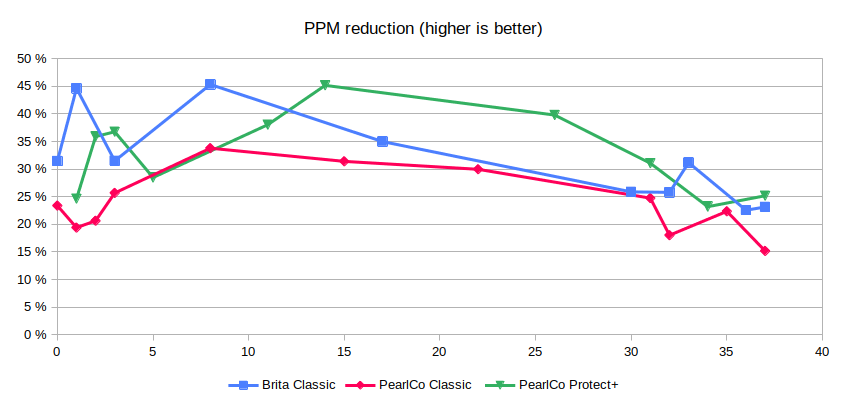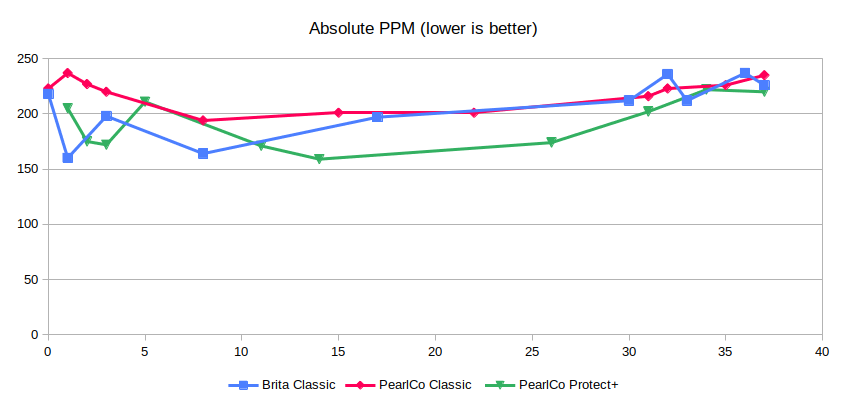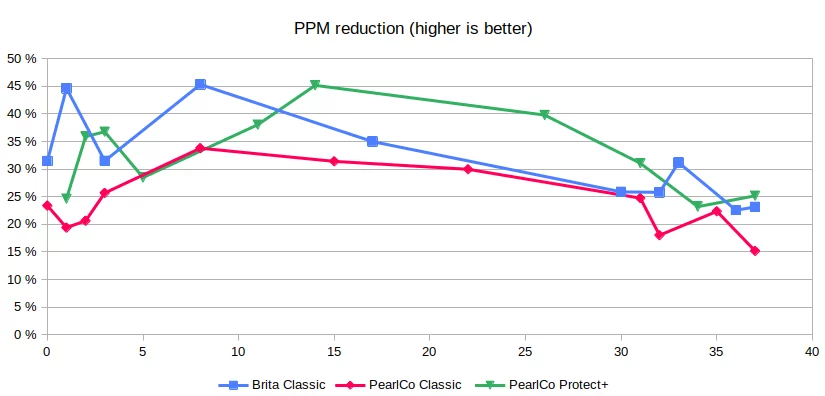Lets say, you want to reduce the water carbonate hardness because you got a shiny coffee machine and descaling that is a time-consuming mess.
If you dont happen to run a coffee-shop, using a water-jug is totally sufficient for this. Unfortunately, while the jug itself is quite cheap, the filters you need will cost you an arm and a leg – similar to how the printer-ink business works.
The setup
Here, we want to look at the different filter options and compare their performance. The contenders are
| Name | Pricing |
| Brita Classic | ~15.19 € |
| PearlCo Classic | 12.90 € |
| PearlCo Protect+ | 15.90 € |
As said initially, the primary goal of using these filters is to reduce the water carbonate – any other changes, like pH mythology, will not be considered.
To measure the performance in this regard, I am using a digital total dissolved solid meter – just like the one used in the Wikipedia article. To make the measurement robust against environmental variations, I am not only measuring the PPM in the filtered water, but also in the tap water before filtering. The main indicator is then the reduction factor.
Also, you are not using the filter only once, so I repeat the measuring over the course of 37 days. Why 37? Well, most filters are specified for 30 days of usage – but I want to see how much cushion we got there.
So – without further ado – the results:
Results
| Name | Ø PPM reduction | Ø absolute PPM |
| Brita Classic | 31% | 206 |
| PearlCo Classic | 24% | 218 |
| PearlCo Protect+ | 32% | 191 |
As motivated above, the difference in absolute PPM can be explained by environmental variation – after all the measurements took place over the course of more than 3 months.
However, we see that the pricing difference is indeed reflected by filtering performance. By paying ~20% more, you get a ~30% higher PPM reduction.
The only thing missing, is the time-series to see beyond 30 days:

As you can see, the filtering performance is continuously declining after a peak at about 10-15 days of use.
And for completeness, the absolute PPM values:

